The gym workout plan guide will divide daily exercises and training, which will enable you to get a balance with your schedule, whether you attend the gym 3 times weekly or daily. It describes the main principles and rules of fitness, such as the 70/30 rule, the 3/2/8 routine, and the common workout patterns, such as the Push-Pull-Legs one. It also discusses the best way to burn calories, as well as how to gain muscle at any age, how to comprehend reps and sets, and how to safely plan your fitness routine in order to gain overall strength and mobility.
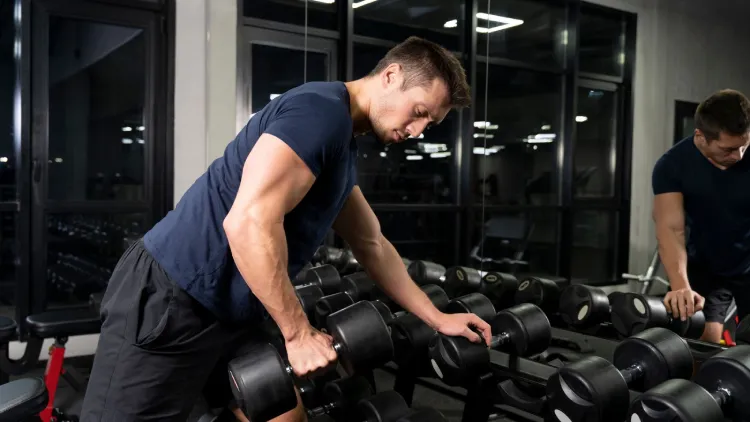
1. Full Body Workout Routine
A whole-body gym workout plan is excellent for those who are new or time-starved. It is also incredibly efficient as it makes use of more than one muscle during a session, which gives the body time to recover properly between sessions. A full-bodied, properly balanced exercise can be performed thrice weekly, which is the best combination of stimulation and rest.
Squats – 4 sets of 10–12 reps
- The exercise is one of the best compound exercises that builds leg strength, gives one a caloric burning effect, and makes the body grow. The squats will also assist you in developing a more powerful core and posture.
Bench Press – 3 sets of 8–10 reps
- It promotes the development of chest size and upper-body strength and should stabilise the shoulders and increase propensity to pushing power.
Lat Pulldown – 3 sets of 10–12 reps
- Important in developing the back, correcting the posture, and pulling muscles in the upper body.
Dumbbell Shoulder Press -3 sets of 10 reps
- Trains the shoulders and arms, and more importantly, the core muscles to achieve stability.
Plank – Hold for 45–60 seconds
- An enormous action to develop central endurance, help in balancing the spine, and enhance the progressive level.
- This exercise is ideal to start with since the duration needed is only 45-60 seconds a day. It also preconditions further invested routines such as Push-Pull-Legs or Upper-Lower splits.
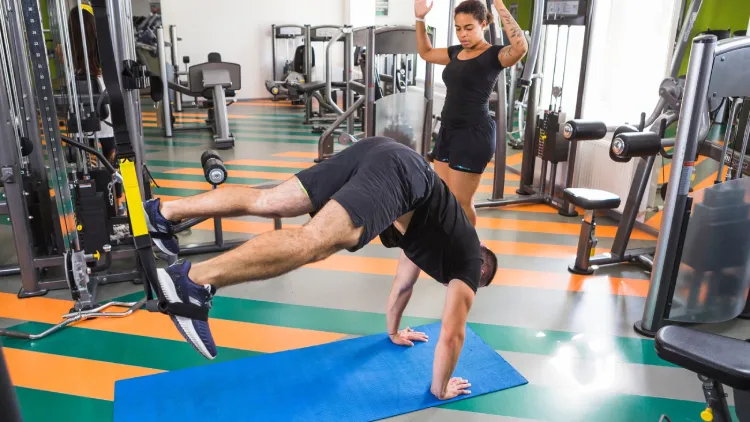
2. Upper/Lower Split Workout Routine
Another popular one among intermediate trainees is the Upper-Lower split that gives the week half-days of upper and lower-body focus. It is a very flexible structure with enough time to rest between engaging a particular muscle group.
Day 1: Upper Body
- Pull-Ups – 4 sets of 6–8 reps
- Excellent width and strength to the back, which is the lats, traps and the arms.
- Dumbbell Press (incline) 3 sets of 8- 10 reps.
- Focuses on the upper breast, and it provides a more toned appearance to your bust.
- Bent-Over Barbell Row -3 sets, 10 reps each.
- An exercise that can be done to strengthen the back and stabilise the muscles.
- Side Lateral Raise– 3 sets of 12 reps.
- Assistants grow broader-shouldered and V-shaped.
- Tricep Dips – 3 sets of 10–12 reps.
Good at creating the size of arms and pushing power.
Day 2: Lower Body
- Leg Press – 4 sets of 12 reps
- Excellent when loading the quads, glutes safely without the use of a barbell.
- Romanian Deadlift– 3 sets 10 reps.
- Emphasises hamstrings and the adductor chain, increasing strength and erectile position.
- Lunges – 3 sets of 12 reps per leg
- Emphasises balance, power and athleticism and utilises a variety of muscles.
- Leg Curl Machine – 3 sets of 15 reps
- Improves muscle tone and exercise of the hamstrings.
- Standing Calf Raise -3 sets of 20 reps
- Strengthens the calves and maintains the ankle.
This is a 4-day-a-week schedule that applies one time or two times each part of the body, which has been shown to boost muscle growth and strength in the majority of people.

3. Push-Pull-Legs (PPL) Split Workout
It is advisable to use the Push-Pull-Legs split, which is one of the most appropriate structures in any gym workout program, particularly when you want to become a 6-day/week trainee. It divides the movements by the type of muscle movement, which enables you to heal faster and remain focused during physical activities.
Day 1: Push (Chest, Shoulders, Triceps)
- Barbell Bench Press 4 sets (8 reps).
- Helps strengthen and develop upper-body muscles.
- Overhead Press – 3 sets of 8–10 reps
- Increases expertise in the shoulder.
- Chest Fly Machine- 3 sets of 12 reps.
- Extends and toughens the muscles of the chest.
- Cable Tricep Pushdown -3 sets at 15 reps each.
- Burns fat and gets the back arm muscles.
Day 2: Pull (Back, Biceps)
- Deadlift – 3 sets of 5 reps
- Working out the whole body and promoting power, strength, and posture.
- Seated Cable Row – 4 sets of 10 reps
- Increases the thickness and effectiveness of the back muscles.
- Face Pulls – 3 sets of 12–15 reps
- Stabilises rounded shoulders and helps strengthen of upper back.
- Hammer Curls – 3 sets of 10 reps
- Concentrates on the size of the arms and the strength of the forearms.
Day 3: Mat lower (Quads, hamstrings, Glutes, Calves)
- Back Squat on a Barbell- 8 reps 4 sets
- Develops the leg and core strength.
- Leg Extension – 3 sets of 15 reps
- Strengthens the quad muscles without any harm.
- Hip Thrusts – 3 sets of 12 reps
- Assist in the development of the glutes and decrease the lower back strain.
- Seated Calf Raise- 3 sets, 20 reps.
- Develops well-formed, permanently developed calves.
This plan is commonly revolved in 6-day work weeks at the expense of a single rest day. You can also include cardio or ab exercises, or flexibility exercises during light days.
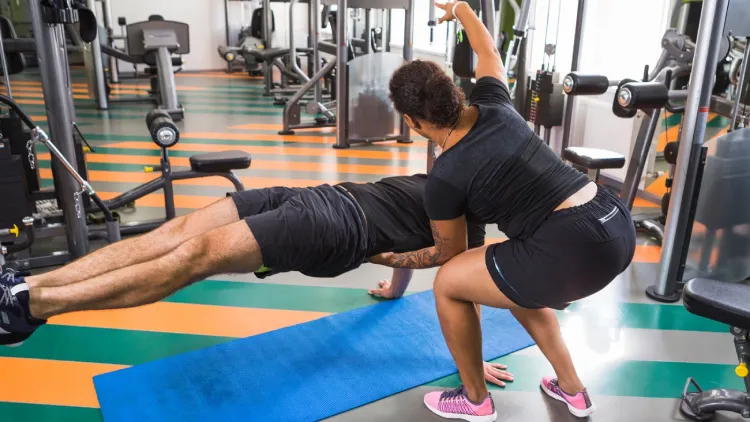
4. Core-Focused Workout Add-On
Stability, posture, general strength, and injury prevention are important and depend on core strength. This can be done after any exercise or even alone.
Core Routine:
- Hanging Leg Raise -3 sets of 10-12 reps
- Grows lower abdomens and hip development.
- Russian twists -3 sets of 20 (10 on each side) reps.
- Improves lateral or side-to-side core strength and rotation.
- Abs Wheel Rollout – 3 sets of 12 reps
- A difficult trick which requires core, lat muscles and shoulder control.
It is also possible to introduce exercises such as reverse crunches, bicycle kicks, or planks to make the core exercises more varied.
Tips to Stick to Your Gym Workout Plan
Consistency and progression are more important than anything else when one is taking any gym workout plan.
To maximise your exercises, here is the way:
- Warm-Up First: Light cardio and dynamic stretching for 5-10 minutes to warm up the body and reduce less risk of injuries.
- Progressive Overload: It is always better to strive to add weight, reps or intensity as time goes on. This activates growth and fat burning in muscles.
- Keep Track of your reps and sets: In case of not knowing how to interpret reps, 4 x 8 entails 4 sets of 8 reps respectively. Most strength-building programs are based on this general framework.
- Win and Lose: Although the plan includes a 7-day workout in the gym, rest or active recovery is important to prevent burnout and also to enable the muscles to develop.
- Cool Down: It is all about stretching to stay flexible and lessen pain.
- Eat with Purpose: The 70/30 rule, 70 per cent nutrition, 30 per cent training. Diet is healthy and energy-giving.
- Training: It is important not to overtrain by working 2 hours a day, as it may result in fatigue or injuries. The majority of the population has great results in less than an hour per session.
Whatever program you are on, be it a 3-day split or 7 intense, listen to your body. The best exercise regimen in a gym is a combination of hard work, nutrition, and intelligent development.
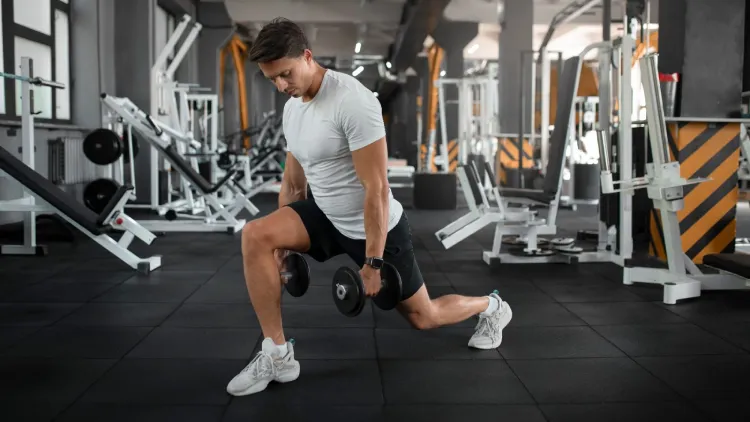
Final Thought
Regardless of what gym workout plan you select, it will be impossible to achieve success unless you stick to it, know how to use the right form, diet smart, and get motivated. Whether it is in order to gain weight in 7 days, burn 1000 calories in 30 minutes or maintain fitness at 40, the marathon will be achieved through commitment and discipline. It is best to stick to the plan, have faith in the process and see your performance taken to another level.
Frequently Asked Questions
1. What is the number of days during which I would work out?
Based on experience and objectives, 3 -6 days. Novices will use 3 days at the beginning; experienced lifters will be able to work with 6.
2. Can I go to the gym every day?
Yes, but include more light exercises such as stretching or core training lest you overtrain.
3. What is progressive overload?
It is slowly adding weight, repetitions, or intensity in order to gain muscle and strength.
4. Is it necessary to core train?
Yes, a hard centre enhances the balance, posture and generally performance in any workout.

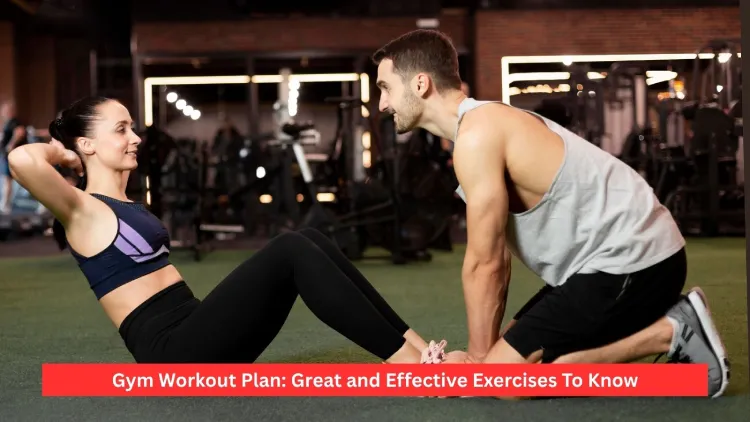

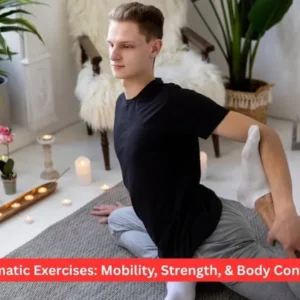


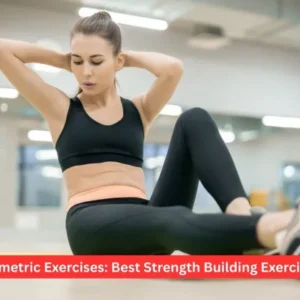

2 thoughts on “Gym Workout Plan: Great and Effective Exercises To Know”
The clarity here is outstanding.
Thank you! Glad you found it clear and helpful.